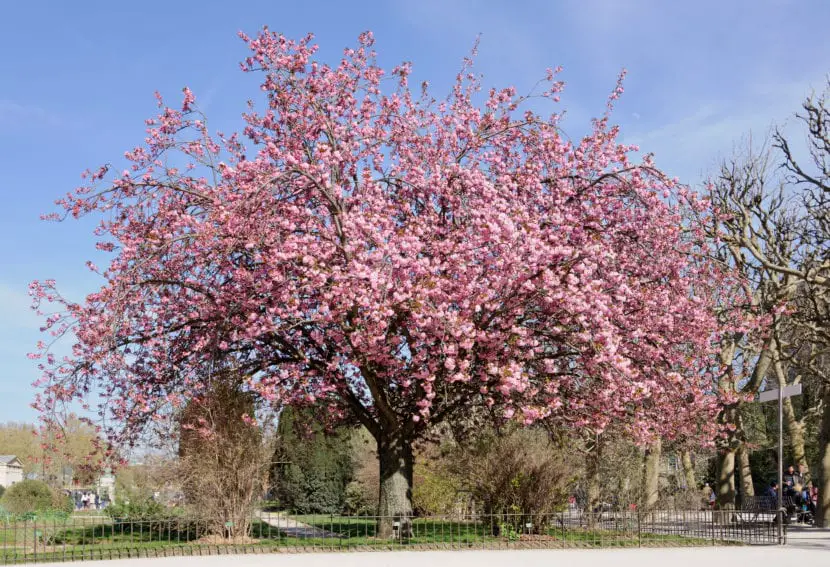
The japanese cherrywhose scientific name is Prunus serrulata, It is one of those trees that, when you see them once in images, going to a garden or a nursery, it remains in your memory. It is spectacular, especially when it is in flower. But the beauty increases when they tell you that it supports frost and that it can grow even in alkaline soils.
And it also does not need pruning: just plant it in a place where it can grow well, and regular waterings. So what are you waiting for to beautify your garden with this magnificent tree? Here is a guide to their care.

I love this tree. In fact, I dream of going to Japan in the spring just to see them in bloom. Surely you would like to see them too, right? But of course, if we compare the price of a plane ticket to Japan with that of a Japanese cherry tree, well … sometimes it pays more to buy the plant and leave the trip for later. Thus, one day you decide to go to a nursery to buy your specimen, or you decide to buy it from an online store, and when you have it at home after carefully observing it, you think that it is time to plant it. But, where?
Well, this is a tree that doesn’t really take up much: it reaches a maximum height of 5m, with a crown up to 4m in diameter. The root system is non-invasive, so it can be placed near buildings and soils without problem. What’s more, it resists frosts down to -15ºCso we don’t have to worry about low temperatures.

In order for it to grow healthy and strong it is necessary that we put it in an area where it gets direct sunlight, and that we water it between 2 and 3 times a week a week, and every 5-7 days the rest of the year. It is also highly recommended pay it in spring and summer with organic fertilizers, such as liquid guano. In this way, it will produce a greater number of flowers.
Do you dare to have a Japanese cherry tree?
